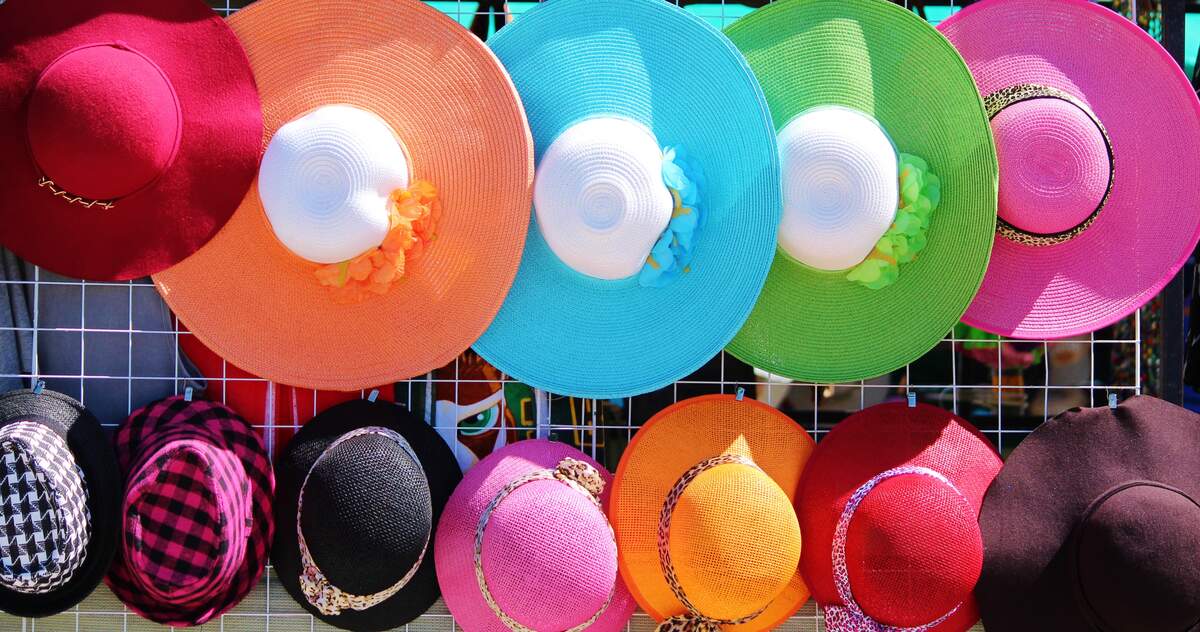

National Hat Day
Observed
the third Friday in January (until 2002)
annually on January 15th (since 2003)
Dates
Tags
Clothing & Fashion
Hashtags
Sources
http://www.historyofhats.net/
https://www.britannica.com/topic/hat
https://www.holidayinsights.com/other/hatday.htm
https://www.anrdoezrs.net/links/100298379/type/dlg/https://www.newspapers.com/image/192132692/
https://www.anrdoezrs.net/links/100298379/type/dlg/https://www.newspapers.com/image/243084459/
https://www.anrdoezrs.net/links/100298379/type/dlg/https://www.newspapers.com/image/345307405/
What's your favorite kind of hat? There are many types and styles, and chances are you'll see a lot of them today because it's National Hat Day! People make a statement by wearing whatever kind they like, and some people even choose to wear multiple kinds throughout the day. There are records of the day being celebrated at least as far back as 1983. It was originally observed on the third Friday in January, but it switched to being observed on January 15 around 2003.
Hats may serve a variety of functions, and they sometimes serve more than one function at a time. They may offer protection and safety, keep the sun out of the eyes, keep the head warm, make a fashion statement or show status, indicate religion, indicate office or rank, accompany a ceremonial function, help conceal identity, or conceal hair loss or bedhead. Although hats are quite commonplace, they are worn less today than they were in centuries past.
Romans and Athenians were early wearers of hats. Felt hats were common with the artisan class, while the upper classes usually only wore hats if they were hunting or traveling. During the Early Middle Ages, hats were usually made of cloth, and chaperons were common with both men and women. Veils and draperies were often worn by women during the Middle Ages. Women's hats became more elaborate in the fifteenth century, when the wearing of steeple headdresses, such as hennins, as well as turbans, were common.
Men in the seventeenth and eighteenth centuries wore either bicorne or tricorne hats—which were common with aristocrats—or round hats with high crowns—which were common with English and American Puritans. Eighteenth-century women were known to wear calashes, which were big bonnets that resembled the top of calèches, which were French carriages. In the years that followed the French Revolution, the top hat, made with silk, supplanted the tricorne hat with gentlemen.
The middle class began wearing other types of hats in the nineteenth century, such as the derby hat—known as the bowler hat in England—which debuted in 1850. Made of hard felt with a narrow brim and a low crown, the derby hat caught on with all classes and remained popular for over a century. There are many other popular kinds of hats. The Stetson, first made in 1865, is associated with cowboys and synonymous with the cowboy hat. The fedora, which made its debut in 1882, is made of felt and has a crease in its center and a soft brim. The sombrero, which is widespread in Latin America and the American Southwest, has a wide brim and a conical crown. The hard hat protects construction workers. Originally made of steel, the first hard hat was patented in 1919, and they now are made with high-density polyethylene. You may find people wearing one of these or any other number of hats today!
How to Observe National Hat Day
Celebrate the day by wearing your favorite hat, or switch off among a number of hats throughout the day. You could buy a new hat, learn more about different hat styles, check out some of the most remarkable hats of all time, listen to some songs about hats, or host a hat party. There is a wide range of ways to partake in the day, as long as you keep hats at the center of your celebration!





















